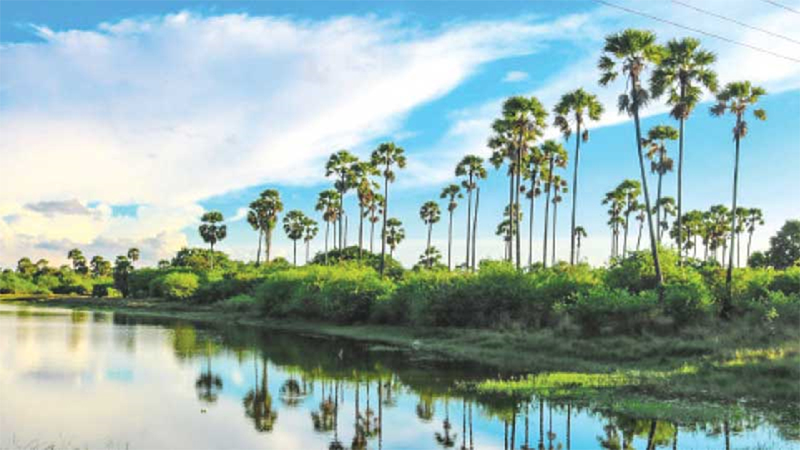Calm, lazy, and free of tourist traces, the Northern Province is completely different from the Sri Lanka you’ve come to love. With distinct echoes of their remarkable Tamil heritage and remnants of Hindu culture that is so different from the Sinhalese and Buddhist customs of the south, the northern realms march to the beat of their own drum.
With its mysterious terrain opening up to revellers searching for rainbow-colored Hindu temples, palmyra-fringed coastline, and friendly interactions with sari-clad women biking across the streets, the once war-torn peninsula has emerged as an off-the-beaten destination. Although there is still a noticeable military presence, the atmosphere is calm and safe as residents focus on mending and resurrecting the northern culture and heritage.
This area has been restored and reopened, greatly simplifying (and also greatly enhancing) the exploration process. Following the 2015 elections, the previously mandated permits were removed, allowing tourists to now access most of the north, including previously inaccessible locations like Mullaitivu, which was vital to the civil war. Fast road and rail connections have been made possible by significant improvements to the area’s main highways, guaranteeing secure and comfortable transportation throughout the expanding province.
The northern province has transformed from a war-torn area to a thriving travel destination with plenty of life-changing experiences for everyone. Get away from the crowd and visit the Jaffna Peninsula, which has a lengthy stretch of coastline, sacred springs, swaying palmyra palms, and slower-paced outer boroughs. The region is renowned for its tongue-twisting Odiyaal kool flavors, hot and crispy dosais, and savory ulundu vadais. It is also known for its amazing dolphin and whale watching experiences.
Here are a few fantastic things to do in the North and Jaffna:
Madhu Shrine – Madhu Church, officially known as the Shrine of Our Lady of Madhu, is one of Sri Lanka’s most revered and significant religious sites. Nestled in the town of Madhu in the Mannar District, this Catholic shrine has been a symbol of faith, hope, and resilience for decades, attracting millions of devotees from around the world. The origins of the Shrine of Our Lady of Madhu date back to the early 17th century when Portuguese missionaries established a small chapel dedicated to the Virgin Mary. Over the centuries, the site evolved into a major pilgrimage destination. The current church structure was built in the late 19th century, replacing earlier buildings that were destroyed or deteriorated over time. Madhu Church holds profound religious significance for Catholics in Sri Lanka and the broader Christian community. It is dedicated to Our Lady of Madhu, revered as the patroness of Sri Lanka. The shrine is a focal point for annual pilgrimages, especially during the Marian month of May, when thousands of devotees undertake the sacred journey to seek blessings, offer prayers, and participate in religious ceremonies.
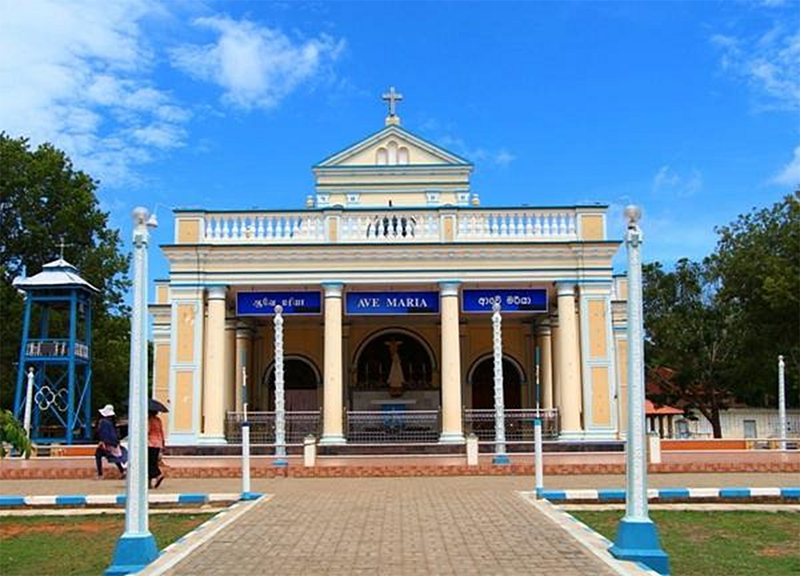
Nallur Kandaswamy temple
Nallur Kandaswamy Temple, located in the town of Nallur in Jaffna, Sri Lanka, is one of the most significant and revered Hindu temples on the island. Dedicated to Lord Murugan, the Hindu god of war and victory, the temple is a vibrant center of Tamil culture and spirituality, drawing devotees and visitors from across the country and the world. The history of Nallur Kandaswamy Temple dates back to the 10th century, with its origins tied to the early Tamil kingdoms in Sri Lanka. The temple was originally built by Bhuvanekabahu, a Tamil king, during the Jaffna Kingdom era. However, the original structure was destroyed by the Portuguese in the 17th century during their colonization of the island. The present-day temple was rebuilt in 1749 by Kandyan King Kirthi Sri Rajasingha’s chief minister, who was a Tamil Hindu, and has since undergone several renovations. Despite the historical turmoil, Nallur Kandaswamy Temple has remained a key religious and cultural institution for the Tamil Hindu community in Sri Lanka.
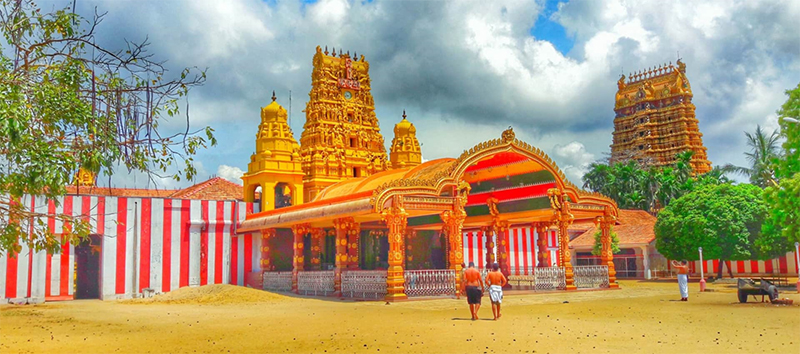
Casuarina Beach
Casuarina Beach, located in the northern part of the Jaffna Peninsula in Sri Lanka, is a tranquil and picturesque coastal haven known for its pristine beauty and serene ambiance. Situated near the village of Karainagar, this beach is often celebrated as one of the finest in the region, offering a peaceful retreat for visitors seeking to escape the hustle and bustle of everyday life. Casuarina Beach is named after the Casuarina trees that line its shores, providing natural shade and adding to the beach’s idyllic atmosphere. The beach is characterized by its soft, golden sands and calm, shallow waters, making it an ideal spot for swimming and leisurely walks along the shoreline. The clear blue waters of the Indian Ocean gently lap against the beach, creating a soothing soundscape that enhances the feeling of tranquility.
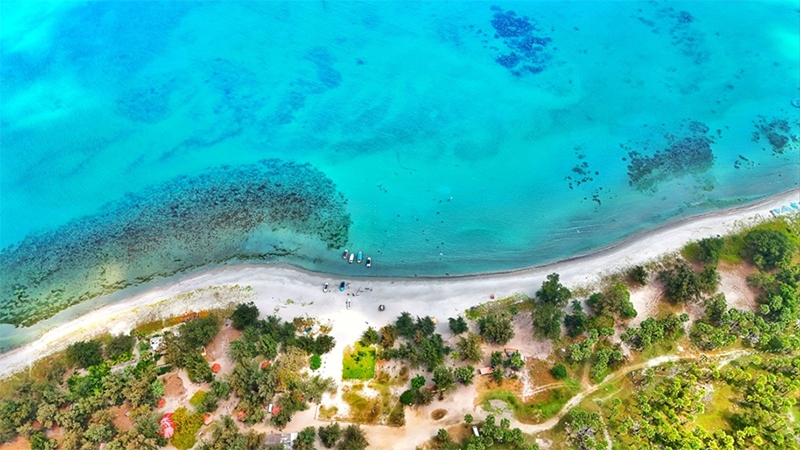
Point Pedro
Point Pedro, located at the northernmost tip of Sri Lanka, is a quaint and culturally rich town in the Jaffna Peninsula. Known for its historical significance, scenic coastal views, and cultural heritage, Point Pedro offers a unique glimpse into the northern region of the island. Point Pedro is the northernmost point of Sri Lanka, with a landmark indicating the exact spot where the Indian Ocean meets the land. The town’s name, “Pedro,” is derived from the Portuguese name “Ponta das Pedras,” meaning “Rocky Point,” reflecting its rocky coastline. The area is known for its windswept beaches, coral reefs, and vibrant fishing communities, making it a significant maritime location.
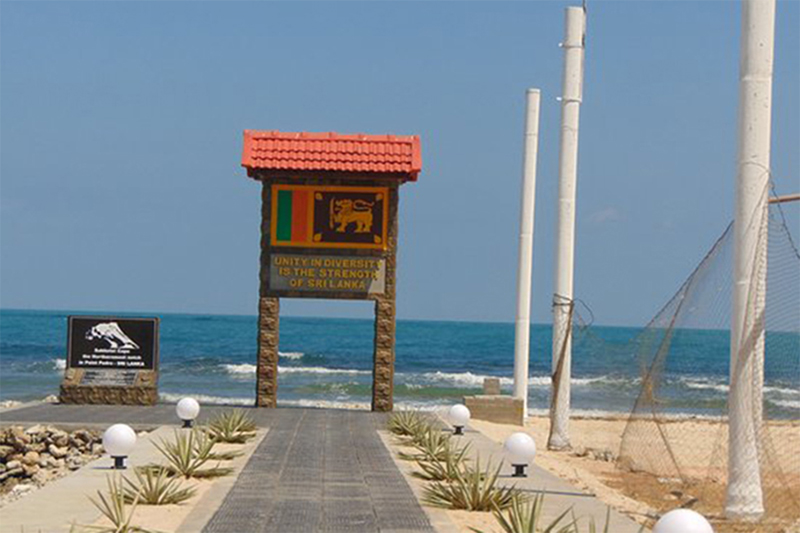
Nagadeepa Viharaya
Nagadeepa Viharaya, located on the small island of Nagadeepa (also known as Nainativu) off the northern coast of Sri Lanka, is one of the most sacred Buddhist sites on the island. It holds deep religious significance for Buddhists, as it is believed to be one of the places visited by the Buddha during his second visit to Sri Lanka. Nagadeepa Viharaya is renowned for its connection to a significant event in Buddhist history. According to legend, during the Buddha’s second visit to Sri Lanka in the 6th century BCE, he intervened in a conflict between two Naga kings, Chulodara and Mahodara, who were fighting over a gem-studded throne. The Buddha preached the Dhamma to the Naga kings, leading to reconciliation and peace. As a gesture of gratitude, the Naga kings offered the throne to the Buddha, which was later enshrined in the Nagadeepa Viharaya. This event is commemorated by the temple, making it a place of pilgrimage for Buddhists from Sri Lanka and around the world.
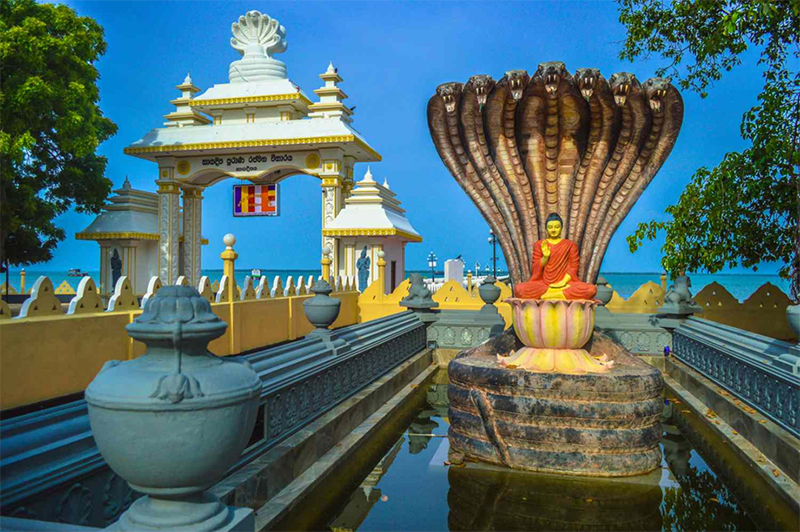
Dambakola Patuna
Dambakola Patuna, located on the northern coast of Sri Lanka near Jaffna, is a historically significant site in the island’s Buddhist heritage. This ancient port town, also known as Jambukola Patuna, is revered as the place where Buddhism first arrived in Sri Lanka. Dambakola Patuna is primarily celebrated as the landing site of Sangamitta Theri, the daughter of Emperor Ashoka of India, who brought a sapling of the sacred Bodhi tree to Sri Lanka in the 3rd century BCE. This sapling, a descendant of the tree under which the Buddha attained enlightenment, was planted in Anuradhapura and became known as the Jaya Sri Maha Bodhi, which still thrives today. The arrival of Sangamitta Theri with the Bodhi sapling is considered one of the most pivotal events in Sri Lankan history, marking the formal establishment of Buddhism on the island. This event is commemorated by the presence of a temple and a Bodhi tree at Dambakola Patuna, making it a sacred site for Buddhists.
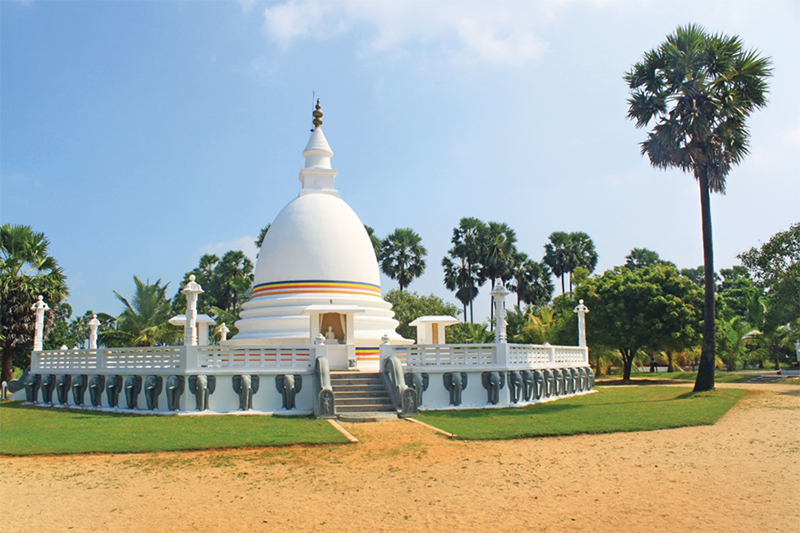
Jaffna Fort’s
Jaffna Fort, located in the heart of Jaffna, Sri Lanka, is one of the most significant and well-preserved colonial-era fortifications on the island. Originally built by the Portuguese in 1618, the fort stands as a testament to the region’s tumultuous history and the various colonial powers that sought control over this strategic area. The fort was first constructed by the Portuguese after they captured Jaffna, but it was later expanded and modified by the Dutch when they took control of the region in 1658. The Dutch made significant enhancements to the fort’s defenses, turning it into a formidable stronghold with thick walls, bastions, and a sophisticated system of moats. The fort was a crucial military and administrative center during the Dutch period and later served under British rule after the British took over the island in 1795. Today, Jaffna Fort is a major tourist attraction, drawing visitors who are interested in Sri Lanka’s colonial past and the history of the Jaffna region. The fort’s elevated ramparts offer panoramic views of the surrounding area, including the Jaffna Lagoon, making it a popular spot for both history enthusiasts and photographers.
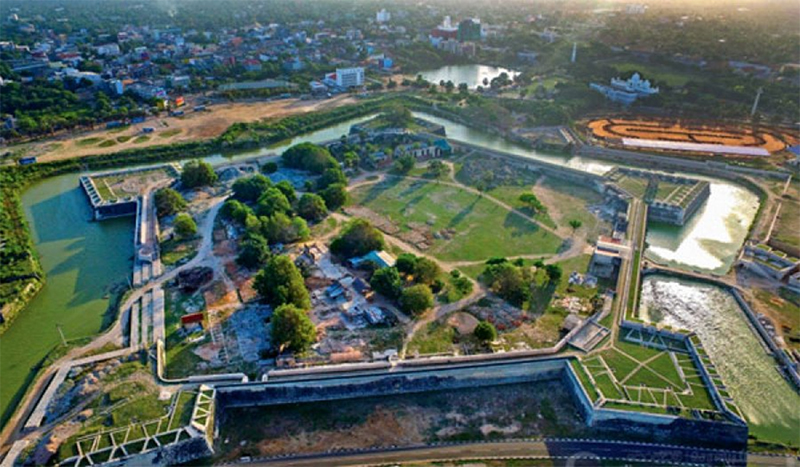
Jaffna Public Library
The Jaffna Public Library is an iconic landmark in Sri Lanka, renowned for its historical significance, cultural importance, and as a symbol of resilience. Located in the heart of Jaffna, this library is one of the largest in Asia and has long been a center of knowledge and learning for the Tamil-speaking population of the region. The Jaffna Public Library was established in 1933, initially starting as a small private collection by community members. Over the years, it expanded rapidly, amassing a vast collection of books, manuscripts, and historical documents, many of which were rare and invaluable. By the 1950s, the library had grown into one of the most significant cultural institutions in Sri Lanka, housing over 97,000 volumes. Today, the Jaffna Public Library stands not only as a center of learning but also as a symbol of reconciliation and peace. The library has been replenished with new collections, including modern books, periodicals, and digital resources, while efforts continue to recover and restore lost materials. It serves as a vital resource for students, researchers, and the general public, promoting education and cultural exchange.
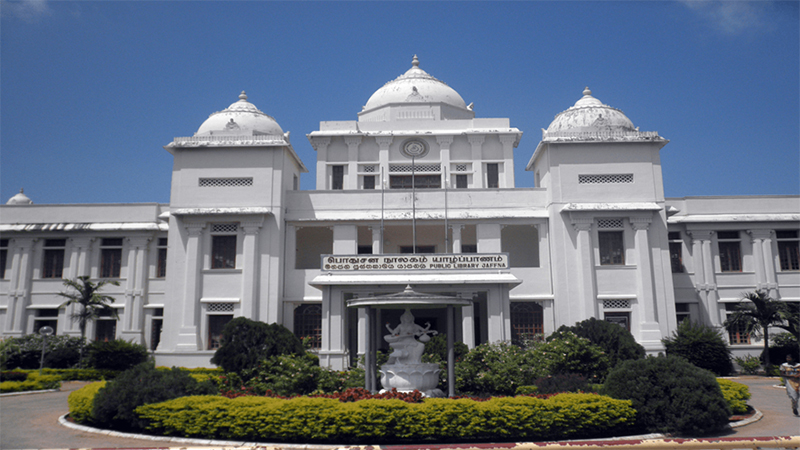
When to visit
February to September
It is a good idea to visit the north between February and September as the weather is generally pleasant and dry.
Since April is the hottest and driest month of the year, it is advisable to exercise caution when going sightseeing between 11 a.m. and 3 p.m.
Showers that are brief and intense usually occur in May and June.
The period from July to September is known as the inter monsoon. Traveling during the inter monsoon is also recommended because there are less crowds and better lodging deals.

